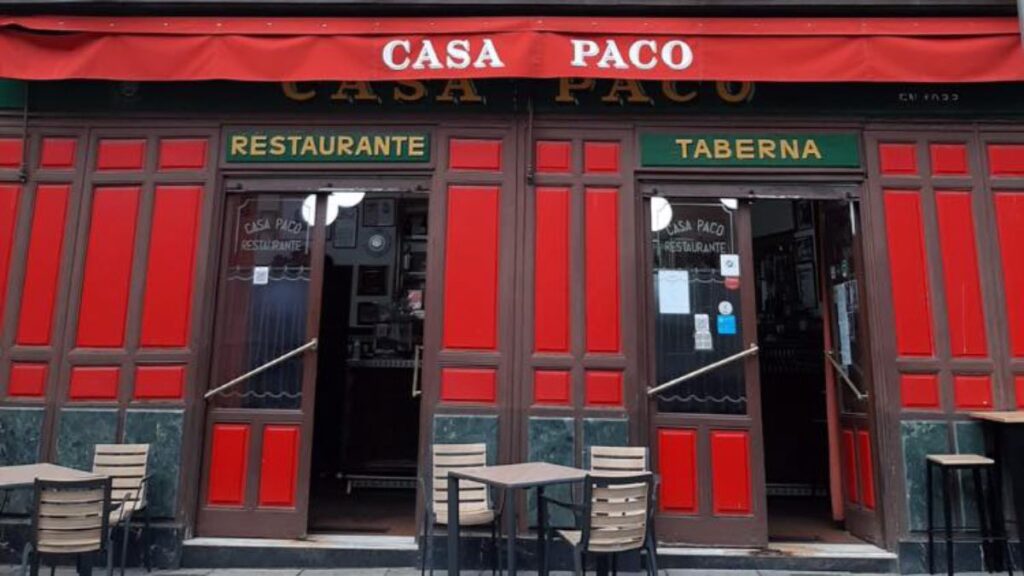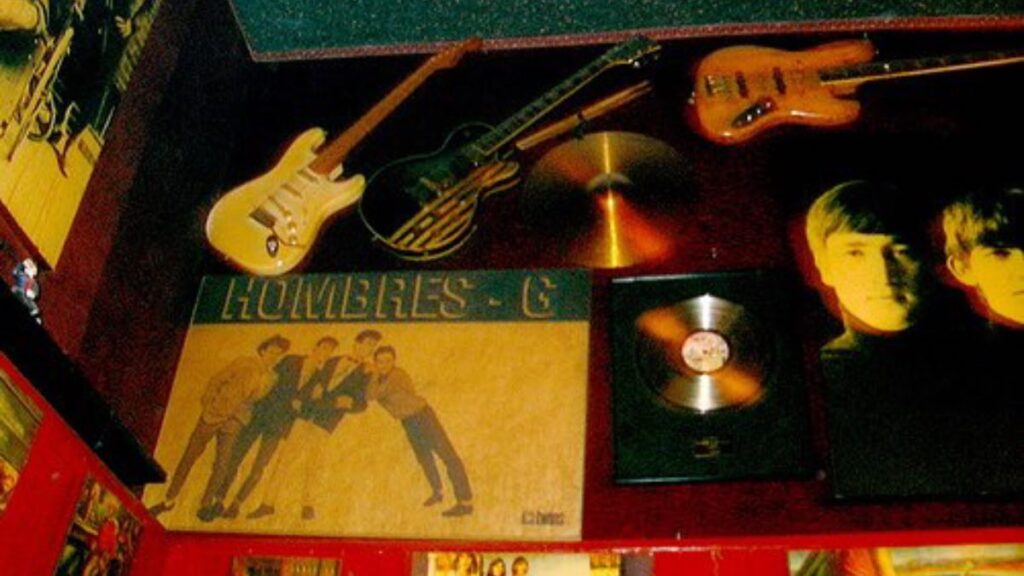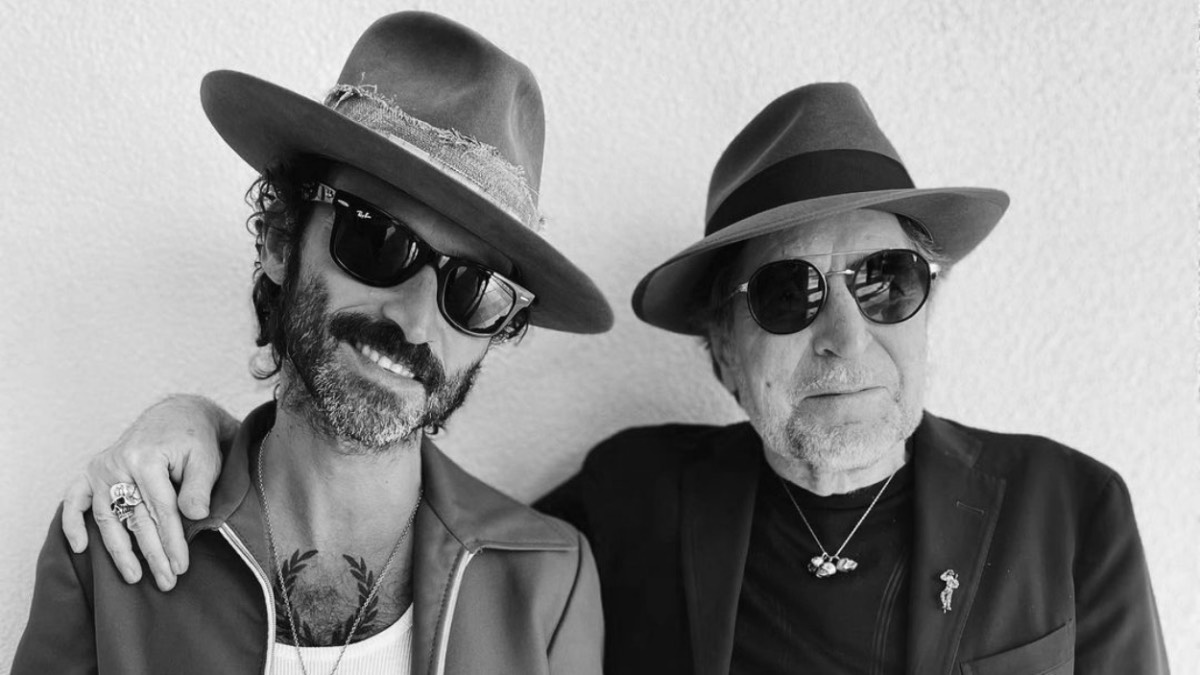Click here to read the Spanish version.
We already know that Madrid is a city that inspires and many artists have left an account of it in their works. In music, talking about Madrid is something recurrent. Joaquín Sabina sang it in ‘Pongamos que hablo de Madrid’, Loquillo in ‘En las calles de Madrid’, Pereza in ‘Lady Madrid’ and even Shakira with her well-known song ‘Te dejo Madrid’. The capital has served as a context for a lot of songs that are still playing in the soundtrack of many people. And if there is something characteristic of Madrid are its bars. Therefore, we have selected some of these legendary bars that appear in Spanish rock songs to make our particular rogue route through Madrid. Are you in?
Casa Paco

In their song titled ‘Madrid’, the group Pereza named this place that has been open since 1933 (this year celebrates its ninetieth anniversary). In the lyrics, the singers said: “Take your time, it’s not dark yet. I’ll wait for you at Casa Paco”. In this legendary restaurant located in the neighborhood of La Latina (Plaza Puerta Cerrada, 11) you can enjoy homemade Castilian food and hearty portions of Madrid-style tripe, cocido madrileño (stew) or cebón de buey (beef) accompanied by a good beer. Surely Leiva and Rubén were referring to some of these dishes when they composed the song. It was common for the group to mention other venues in their songs, such as the Siroco in the song ‘Por mi tripa’ from 2007.
La Mordida
With Joaquín Sabina we could make a real route through Madrid to discover all the corners of the capital. From the current La Mordida de la calle Belén, which in its day was the Café de Belén that he owned with his friend Julio Sánchez. At one of its tables he wrote songs like ‘Más de cien mentiras’ or ‘En el bulevar de los sueños rotos’. In 1995 they founded there La Mordida, which today has become one of the best known Mexican food chains in the capital. Sabina even said of the place that it was “to laugh with friends, to forget about drinking, to be happy with you; for everything, La Mordida”.
Peor Para El Sol
This place was actually created as a tribute to the song ‘Peor para el sol’ that Sabina published in 1992, included in the album ‘Física y química’. In the song, the singer-songwriter talks about a relationship between a man and a woman. Currently this place is located at C. de la Unión, 2, near Ópera. It stands out for offering a lot of live music and other cultural activities.
Rowland

In 2021, the Hombres G band released their album ‘La equina del Rowland’, which included a song with the same title. The Rowland is the mythical bar where the band started almost 40 years ago. It is a local located in the area of Parque de las Avenidas (in Avenida de Baviera, 9) and this song is a tribute to the bar where they were born. According to the group itself, this song talks about them “when we were 17 or 18 years old. I would go to the Rowland and talk with Javi and Dani about our dreams. We had our little group, we dreamed that someone would listen to us, that they would give us a chance. It’s a little bit the origin of everything. So many years have passed, the Rowland is still the same and Hombres G are still here”. Today, the place has a lot of references to the group.
El Penta
An infallible option if you go to Malasaña and you feel like a drink, whatever day it is, is El Penta (C/ La Palma 4, Madrid). It is one of the reference bars of the Movida Madrileña. Nacha Pop mentions it in his wonderful song ‘La chica de ayer’. From that time it is said that Antonio Vega and his band mates used to spend a lot of time in this place dancing, drinking, getting inspired…
La Vía Láctea
Another mythical nightclub in Madrid, both for its atmosphere and for its history and inspiration. La Vía Láctea, in the heart of the Malasaña neighborhood, located specifically at 18, Velarde street. Groups like Amaral name it in their songs, specifically in ‘Es sólo una canción’ introduced by a: ¿Te hace un billar? And how many stories will have been born between game after game of this perennial game table in the Milky Way since the eighties. Velarde Street, 18 (Malasaña)
Palentino (now turned into Pez 8)
Another of the emblems of the Malasaña neighborhood. El Palentino was a historic bar on Pez Street, 8, which opened its doors in 1942 and its first stage ended in 2018, weeks after the death of one of its owners, Casto Herrezuelo. This bar was one of the obligatory stops named by the group Siniestro Total in their 1992 song Somos Siniestro Total. In that song they also mentioned other bars that are no longer open, such as KWAI and Berberecho. Although, according to Julián Hernández, when they appeared in the song they were not fashionable bars. Otherwise, they would not have been named.
Returning to the mythical Palentino, although it reopened completely renovated in 2019, the pandemic took its toll on the concept, and in 2021 it closed for good. Now in the same physical space is located Pez 8, which offers a modern and homemade cuisine, in an atmosphere of dim light, good vibes and recovering a certain rogue air of that era of Malasaña.
Café Libertad
Another of Madrid’s mythical bars, this time in the neighborhood of Chueca, has also been recurrent in the world of music. In 2010, the group 84 released the song ‘Esquinas de Madrid’, in which they mentioned the following: “En la calle Segovia, en el Café Libertad , en la Plaza del Dosde te solía tocar” (…) “En la calle La Palma, en el Búho Real, 84 concerts in the back”, referring to two well-known historical music venues in the capital. In addition, in 2021 they released a new version of the song together with Taburete. Café Libertad 8 continues to be a meeting place for music, poetry and culture in general.
Museo Chicote
In Madrid there are bars that are as relevant as its monuments and one of them is the almost centenary Museo Chicote, located in Gran Vía and that was already named in the famous chotis entitled ‘Madrid’. In 2010, Ariel Rot and The Cabriolets decided to make a new version of the song in pop key for a tourist campaign and of course, this place could not miss. In the song they named the place as follows: “In Chicote, a postinero agasajo with the cream of the intelligentsia and the grace of a piropo retrechero more castizo than the street of Alcalá”, Ariel Rot & The Cabriolets”. El local está en C/ Gran Vía, 12.
The route through the bars and, above all, concert halls of Madrid could continue with many groups that marked an era. What other venues would you include in this walk through the musical history of the capital?

